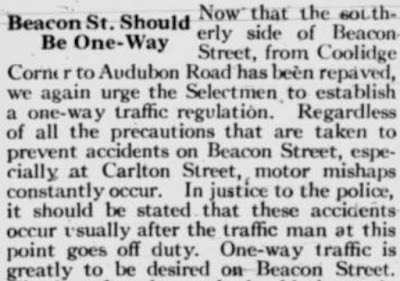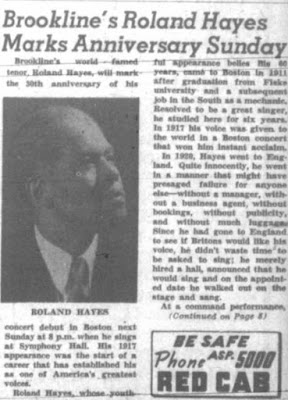 |
| November 30, 1944 |
December 1, 1924 - Elimination of Beacon Street stops protested
December 1, 1935 - New Coolidge Corner post office
November 30, 1944 - Storm damages S.S. Pierce tower
December 1, 2013 - Plastic and Styrofoam ban goes into effect
December 1, 1924
Elimination of Beacon Street stops protested
The planned elimination of almost half of the streetcar stops on Beacon Street in Brookline drew howls of protest from town officials, residents, and businesses. The Boston Elevated, operator of the system, stuck to its plans for several months before restoring most of the eliminated stops.
 |
| Headlines in the Brookline Chronicle captured the ongoing protests against the Beacon Street cuts. |
The restoration of the eliminated stops left the Beacon Street route largely as it is today. Although some of the stops have been moved slightly, the only pre-1924 stops that were not restored were those at Centre Street and Strathmore Road.
December 1, 1935
New Coolidge Corner post office
Storm damages S.S. Pierce tower
The storm shifted the cupola seven inches out of plum, reported the paper, just two inches less than it was designed to withstand without coming off the tower completely. Crowds gathered the next morning to watch as steeplejacks tried to right the cupola. (The Boston Globe described as "a literal 'leaning Tower of Pisa.'")
 |
| The tower of the S.S. Pierce Building before and after the original cupola with an open deck was replaced after the 1944 storm. |
December 1, 2013
Plastic and Styrofoam ban goes into effect
A partial ban on plastic bags and polystyrene containers, passed by Town Meeting in November, went into effect for Brookline businesses. Stores could apply for a six-month waiver to allow time to shift over to new, more environmentally-friendly forms.
Town officials offered workshops to help local businesses comply with the new regulations. Brookline was the first community in Massachusetts to ban plastic bags. Today, 159 Massachusetts cities and towns, representing two-thirds of the state's population, have enacted at least partial bans.
















